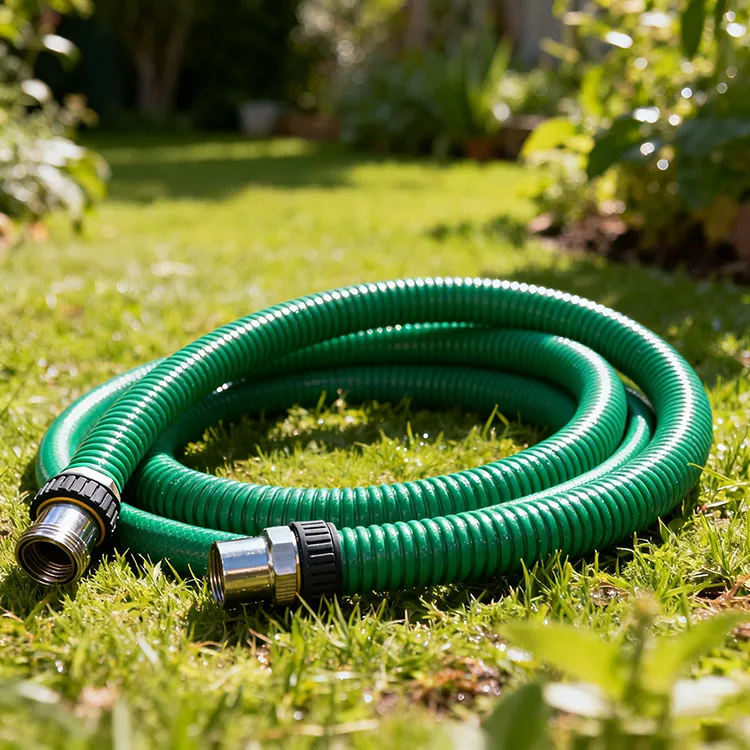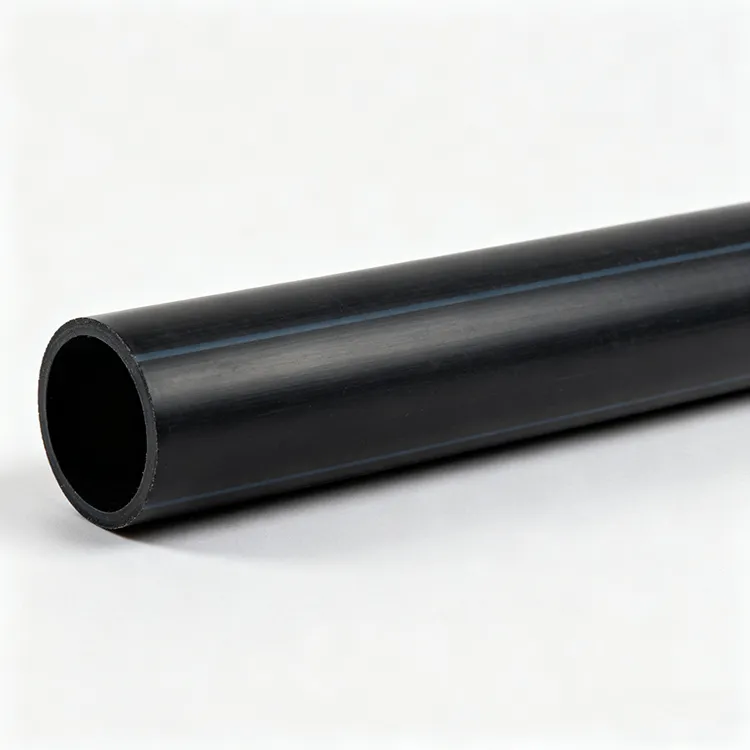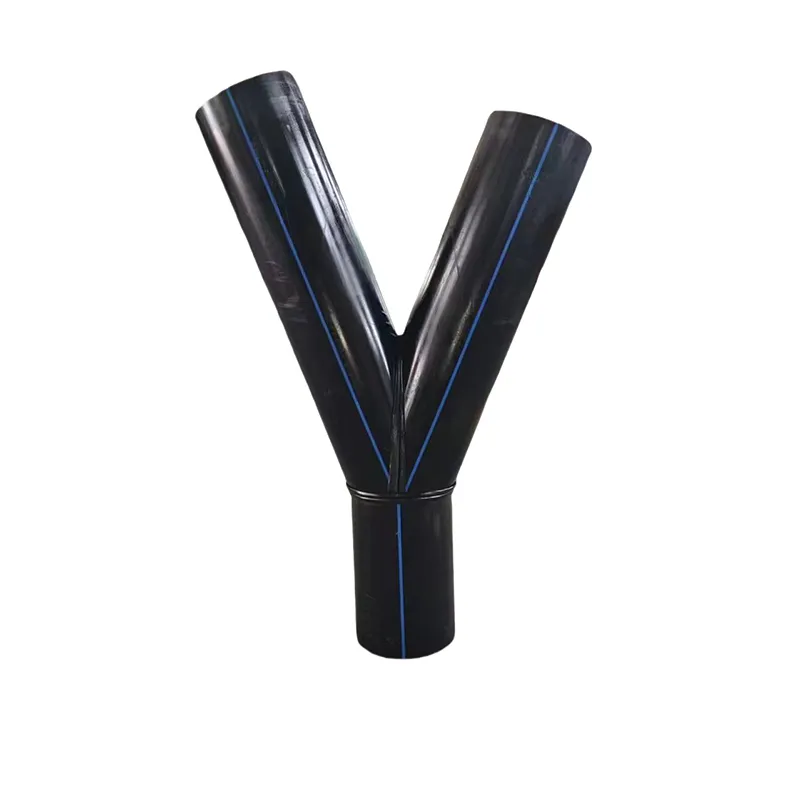Electrofusion pipe fittings are widely used in polyethylene (PE) piping systems for creating strong, leak-proof connections. These fittings include electrofusion couplings, electrofusion saddles, electrofusion tees, and electrofusion elbows, each serving a specific purpose in pipeline installation and maintenance. Electrofusion couplings are designed to connect two pipe ends, ensuring a secure and permanent joint. Electrofusion saddles are used to create a branch connection on an existing pipeline, allowing for new service lines or lateral connections. Electrofusion tees enable the creation of T-junctions, facilitating the branching off of the main pipe into two smaller pipes, while electrofusion elbows are used to change the direction of the pipeline, whether for 45° or 90° turns. Together, these electrofusion fittings provide a versatile, durable, and efficient solution for constructing and expanding PE piping systems in water, gas, and industrial applications. This article will introduce four types of electrofusion pipe fittings: electrofusion couplings, electrofusion saddle, electrofusion tee, and electrofusion elbow.
Electrofusion Couplings
Electrofusion couplings are a type of fitting used in the installation of polyethylene (PE) pipes. They are widely used in applications involving water, gas, and other fluid systems, offering a reliable and durable solution for pipe joining. These couplings use electrical heat to fuse the pipe and fitting together, creating a strong, leak-proof joint.
How Electrofusion Couplings Work
1. Electrofusion Process: The electrofusion coupling has built-in heating elements (usually copper coils) embedded within it. When a controlled electrical current is passed through these coils, they generate heat, which melts the surface of the pipe and the coupling. This creates a fusion bond between the two materials.
2. Installation: To use electrofusion couplings, the pipe ends are prepared by cleaning and scraping to ensure proper fusion. The coupling is then placed over the ends of the pipes, and an electrofusion machine is used to apply the necessary current to melt and bond the materials.
Key Features of Electrofusion Couplings
Strong Joint: Electrofusion creates a homogenous joint between the pipe and the coupling, ensuring a strong, leak-free connection.
Ease of Installation: Unlike traditional welding or mechanical fittings, electrofusion fittings can be installed with minimal tools and do not require high levels of technical skill. They are particularly useful in difficult-to-access locations.
No Need for Heat or Flame: The electrical heat generated in the process is sufficient to achieve fusion, making electrofusion safer and more versatile than traditional welding methods.
Durability: The joint formed by electrofusion is resistant to pressure, temperature fluctuations, and environmental factors, making it ideal for underground or high-pressure applications.
Advantages
Reliable and Permanent Seals: The bond formed is permanent and highly resistant to external stresses, such as movement or ground settling.
Compatibility: Electrofusion couplings are commonly used with PE, which is widely used in a variety of applications, especially in piping systems for water and gas.
Versatility: They are used in a wide range of pipe sizes and can be used to connect different diameters of pipes.
Applications
Water and Gas Distribution: Electrofusion couplings are used extensively in municipal water and gas systems, where leak prevention is crucial.
Industrial Pipelines: These couplings are also used in industrial settings where fluids need to be transported safely, such as in chemical plants or oil and gas systems.
Irrigation: Electrofusion couplings are commonly found in irrigation systems, including those for agriculture and landscaping, due to their durability and leak-resistant properties.
Electrofusion Saddles
An electrofusion saddle is a specialized fitting used in polyethylene (PE) piping systems, designed to branch off from an existing pipeline. It is similar to an electrofusion coupling, but instead of joining two pipe ends, it allows you to tap into a larger pipe by adding a smaller branch. The electrofusion saddle features built-in heating elements that fuse the saddle to the main pipe, creating a leak-proof and durable connection.
How Electrofusion Saddles Work
1. Preparation: The existing pipe is prepared by cleaning and, in some cases, scraping the area where the saddle will be installed to ensure the proper fusion of the materials.
2. Installation: The electrofusion saddle is placed over the prepared area on the main pipe. The saddle has an internal heating element (usually copper coils) that will melt both the saddle and the pipe surface when the appropriate electrical current is applied.
3. Fusion: Once the saddle is securely positioned, an electrofusion machine is used to apply an electrical current, which activates the heating elements and causes the materials to melt and bond together. This creates a permanent, leak-resistant joint.
Features of Electrofusion Saddles
Leak-Proof Joint: The fusion process ensures a reliable, leak-free connection that is resistant to pressure and external stress.
Durability: Electrofusion saddles create joints that are highly resistant to environmental factors such as temperature changes, soil movement, and chemical exposure.
Versatility: Electrofusion saddles can be used on a wide range of pipe sizes, typically from small to large diameter PE pipes, and are ideal for situations where a branch needs to be added to an existing pipeline.
Quick and Easy Installation: The electrofusion process is relatively quick compared to traditional welding or mechanical methods, and it can be done without extensive training or specialized tools.
Types of Electrofusion Saddles
Standard Saddle: A basic saddle used for branching off from a pipeline. It is the most common type used in water, gas, and other piping systems.
Tapping Saddle: A type of electrofusion saddle specifically designed to allow the installation of a service line or smaller branch directly onto the main pipe. It can be used when creating a tapping point to connect to smaller pipes or fittings.
Sidewall Saddle: Used for side-branch connections, typically when a pipeline needs to be tapped from the side, not the top.
Advantages of Electrofusion Saddles
1. Reliability: Electrofusion saddles offer a permanent and robust solution for branching off pipelines, reducing the risk of leaks over time.
2. No Welding or Heat Required: The process uses electrical heat rather than an open flame or external heating equipment, making it safer and more efficient.
3. Compatibility: Electrofusion saddles are designed for use with PE pipes, which are commonly used in water, gas, and other fluid transportation systems.
4. Minimal Disruption: Since the installation of an electrofusion saddle does not require cutting the pipe or using additional welding materials, it minimizes disruption to the existing system.
5. Cost-Effective: The efficiency and ease of installation can make electrofusion saddles a cost-effective solution compared to traditional mechanical or welded branch connections.
Applications
Water Supply Systems: Electrofusion saddles are used to create branch lines for water distribution, both in municipal systems and private networks.
Gas Distribution: These fittings are commonly used in gas systems to create lateral connections for gas meters or new service lines.
Irrigation Systems: They are also used in irrigation systems, where branches need to be added to a main line to direct water to various zones or fields.
Industrial Pipelines: Electrofusion saddles are used in industrial applications where it's necessary to tap into a larger pipeline for processes like fluid control or distribution.
Installation Considerations
Pipe Condition: The pipe surface must be clean and smooth to ensure proper fusion.
Correct Sizing: It's important to use the correct size of saddle for the pipe and the desired branch size to ensure the joint is secure and leak-resistant.
Fusion Machine: An electrofusion fusion unit is necessary to apply the correct electrical current for the fusion process.
Electrofusion Tees
An electrofusion tee is a type of fitting used in polyethylene (PE) piping systems, designed to create a T-junction where three pipes (one main pipe and two branches) are connected. Like other electrofusion fittings, the electrofusion tee uses an electrical current to generate heat, which fuses the fitting to the pipes, forming a permanent, leak-proof joint. This type of fitting is commonly used in water, gas, and industrial piping systems where a branch needs to be added to the main pipeline.
How Electrofusion Tees Work
1. Preparation: The pipes to be connected (the main pipe and the two branch pipes) need to be prepared. This includes cleaning and scraping the pipe ends to remove any dirt, oxidation, or oxidation layers to ensure a good fusion bond.
2. Installation: The electrofusion tee is placed over the prepared pipe ends. The tee has built-in heating elements (copper coils) inside the fitting.
3. Fusion Process: Using an electrofusion machine, an electrical current is applied to the heating elements inside the tee. This causes the material in the heating coils to generate heat, which melts the surfaces of the pipe and the fitting, creating a bond between them.
4. Cooling: After applying the electrical current for a set amount of time (as determined by the fitting's specifications), the joint is allowed to cool. The fusion process creates a homogenous, permanent joint that is resistant to leaks, pressures, and environmental conditions.
Features of Electrofusion Tees
Leak-Proof and Durable: The fusion process ensures that the joint formed is permanent, creating a highly durable, leak-resistant connection between the pipes.
Strong Joint: The joint created is as strong as the pipe itself, ensuring that the fitting will not fail under pressure or stress.
Safe and Reliable: Electrofusion fittings, including tees, are reliable because the heating process is controlled electronically, reducing the risk of human error during installation.
No Welding or Flame: Electrofusion tees are safer to install than traditional welded tees because no open flame or additional welding equipment is required.
Compatibility: Electrofusion tees are designed for use with PE pipes, and are commonly used in water, gas, and wastewater systems.
Types of Electrofusion Tees
1. Equal Tee: The most common type, where the main pipe and the two branches are of the same size.
2. Reducing Tee: This type of electrofusion tee allows the branching pipes to have different diameters (e.g., a large main pipe with a smaller branch pipe).
3. Side Tapping Tee: Used when the branch pipe needs to connect to the side of the main pipe, rather than from the top or bottom.
Advantages of Electrofusion Tees
Efficiency: Electrofusion tees are quick and easy to install, reducing overall installation time.
Minimizes Leakage: The electrofusion process creates an almost seamless joint, eliminating the potential for leaks.
Safer: Since there is no need for an open flame or external heat source, electrofusion fittings are safer to use, especially in environments where open flame could be hazardous.
Durability: The joint created by electrofusion is extremely durable, resistant to pressure, and environmental factors like soil movement, temperature fluctuations, and UV exposure.
No Special Skills Needed: Installation requires minimal technical skills compared to traditional welding methods, though an electrofusion machine is necessary.
Applications of Electrofusion Tees
1. Water Distribution Systems: Electrofusion tees are commonly used in municipal water systems to branch off from the main pipeline to distribute water to different areas.
2. Gas Distribution: These fittings are widely used in gas systems to create service connections or branch lines.
3. Irrigation: In irrigation systems, electrofusion tees are used to connect lateral pipes to the main pipeline, allowing water to be directed to different zones or fields.
4. Industrial Systems: Electrofusion tees are used in industrial applications where it's important to tap into a main pipeline for controlling the flow of fluids or gases.
Installation Considerations
Pipe Preparation: As with other electrofusion fittings, it is crucial to properly clean and scrape the ends of the pipes to ensure a strong fusion bond.
Sizing: Be sure to choose the right size electrofusion tee for the specific diameter of the pipes being connected. A good fit ensures the fusion process is effective and the joint is secure.
Fusion Machine: A compatible electrofusion machine is required to complete the fusion process. This machine applies the correct amount of electrical current for the required fusion time.
Correct Alignment: During installation, ensure that the pipes are aligned correctly with the tee to ensure a proper fusion and a strong joint.
Advantages of Electrofusion Tees in Specific Applications
Water and Gas Pipelines: In these applications, electrofusion tees provide a quick and effective method for adding service connections without compromising the integrity of the main pipeline.
Agricultural Irrigation: In irrigation systems, where pipes are often laid in remote or hard-to-reach locations, electrofusion tees provide a quick and reliable method for branching without requiring additional tools or complex setups.
An electrofusion elbow is a type of fitting used in polyethylene (PE) piping systems to create a connection that changes the direction of the flow of fluid or gas. It works similarly to other electrofusion fittings, where an electrical current is used to generate heat, which melts the surfaces of the fitting and the pipes, creating a permanent, leak-proof joint.
Electrofusion Elbows
Electrofusion elbows are widely used in water, gas, and industrial piping systems, where changing the direction of the pipeline is necessary. They are available in various angles, such as 45° and 90°, depending on the application.
How Electrofusion Elbows Work
1. Preparation: The pipe ends to be connected to the electrofusion elbow are prepared by cleaning and scraping to remove dirt, oxidation, or any surface impurities that may hinder the fusion process.
2. Installation: The electrofusion elbow is placed over the prepared pipe ends. The elbow fitting has embedded heating elements, typically copper coils, that are activated by an electrofusion machine.
3. Fusion Process: The electrofusion machine applies an electrical current to the embedded heating coils, which generates heat. This heat melts both the pipe and the elbow fitting, creating a bond between the two materials.
4. Cooling: After the correct amount of time and temperature for fusion, the joint is allowed to cool, forming a strong, homogenous bond that is resistant to leaks and environmental factors.
Features of Electrofusion Elbows
Leak-Proof and Durable: The fusion process ensures a strong, leak-resistant joint, making electrofusion elbows ideal for high-pressure systems or underground installations.
No Flame or Heat Source: Unlike traditional welding methods, electrofusion elbows use electrical heat, eliminating the need for external heat sources, which makes them safer and easier to install.
Compatibility: Electrofusion elbows are typically designed to be used with PE pipes, but they can also be used with other thermoplastic pipes such as PP (polypropylene) and PVDF (polyvinylidene fluoride), depending on the fitting material.
Quick Installation: Electrofusion elbows offer a faster, more straightforward installation process compared to traditional welding, which can be especially beneficial for large-scale installations or repairs.
Types of Electrofusion Elbows
1. 90° Electrofusion Elbow: Used to change the direction of the pipe flow by 90 degrees. This is the most common type used for typical turns in a pipeline.
2. 45° Electrofusion Elbow: Used to create a gentler change in direction (45 degrees), which is often used when minimizing pressure loss is a concern or for specific installation needs.
3. Custom Angle Elbows: For specific applications where non-standard angles are required, custom-angle electrofusion elbows can be made or adapted.
Advantages of Electrofusion Elbows
Strong and Permanent Joint: The fusion process creates a joint that is as strong as the pipe itself, which ensures the long-term durability of the installation.
Reduced Risk of Leakage: Electrofusion elbows are leak-resistant due to the homogenous nature of the fusion joint, which significantly reduces the chances of joint failure.
Safety: The process does not require an open flame, making it safer for both the installer and the surrounding environment.
Ease of Use: Unlike traditional welding or mechanical fittings, electrofusion elbows are relatively simple to install, requiring minimal technical expertise compared to methods like butt welding.
Flexibility in Applications: They can be used in a variety of pipe systems, including water, gas, wastewater, and industrial applications.
Applications of Electrofusion Elbows
1. Water Supply Systems: Electrofusion elbows are commonly used in water distribution networks to create turns in the pipeline while maintaining the system’s integrity and leak resistance.
2. Gas Distribution Systems: In gas pipelines, electrofusion elbows help ensure safe and efficient changes in direction, minimizing the risk of leaks or system failures.
3. Irrigation Systems: Electrofusion elbows are also used in irrigation systems to create turns and diverging paths in the main pipe, particularly in agricultural fields and large irrigation setups.
4. Industrial Pipelines: In industrial applications, where fluid transport needs to navigate obstacles or specific directional changes, electrofusion elbows provide a reliable solution.
Installation Considerations
Proper Pipe Preparation: As with other electrofusion fittings, the pipe must be properly cleaned and scraped to ensure proper fusion. This step is crucial to ensure the fusion bond is strong and leak-proof.
Correct Sizing: The elbow must match the size of the pipes being connected. Properly sized fittings ensure a secure, leak-free connection.
Fusion Equipment: A compatible electrofusion machine is required to activate the heating elements in the elbow. The electrofusion machine should be calibrated and capable of providing the correct current for the size and type of fitting.
Fusion Time and Temperature: Following the manufacturer’s guidelines for fusion time and temperature is essential to achieve a high-quality joint. The fusion process is generally automated and controlled by the fusion machine.
Advantages in Specific Use Cases
Water and Gas Distribution: Electrofusion elbows provide a safe, reliable method for directing flow in water and gas systems, ensuring there is no leakage even in underground or high-pressure applications.
Irrigation: In large-scale irrigation systems, electrofusion elbows allow for flexibility in the layout of the pipeline without requiring complicated connections or excessive labor.
Industrial Settings: For chemical, oil, or gas plants, where durability and safety are paramount, electrofusion elbows offer a quick, dependable solution for maintaining system integrity under demanding conditions.
965.webp)








659.webp)
210.webp)
328.webp)

294.webp)
476.webp)


